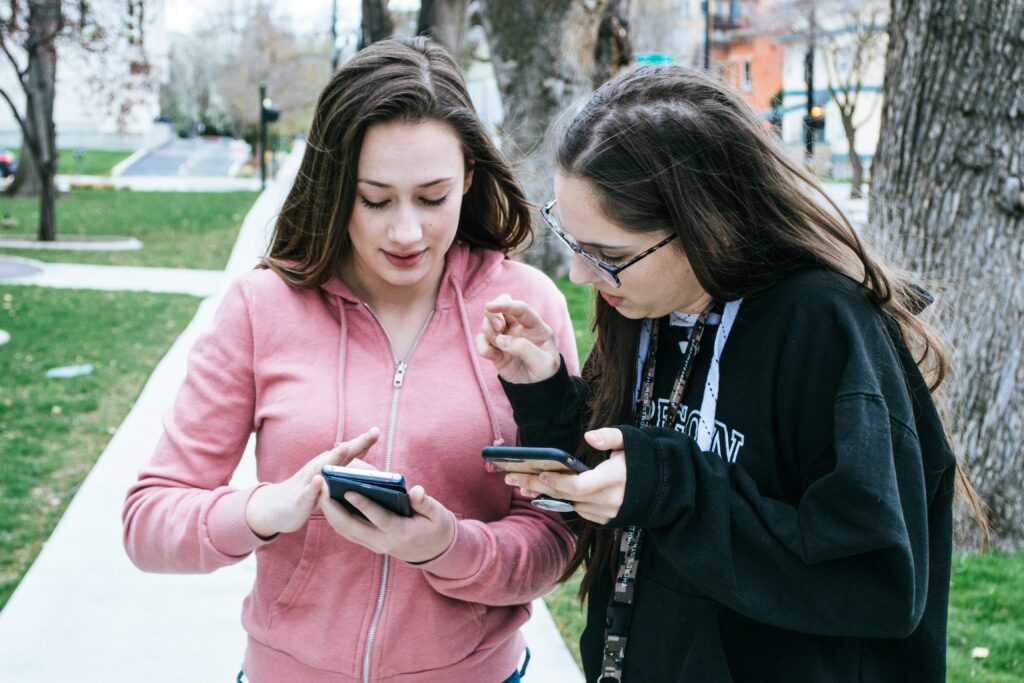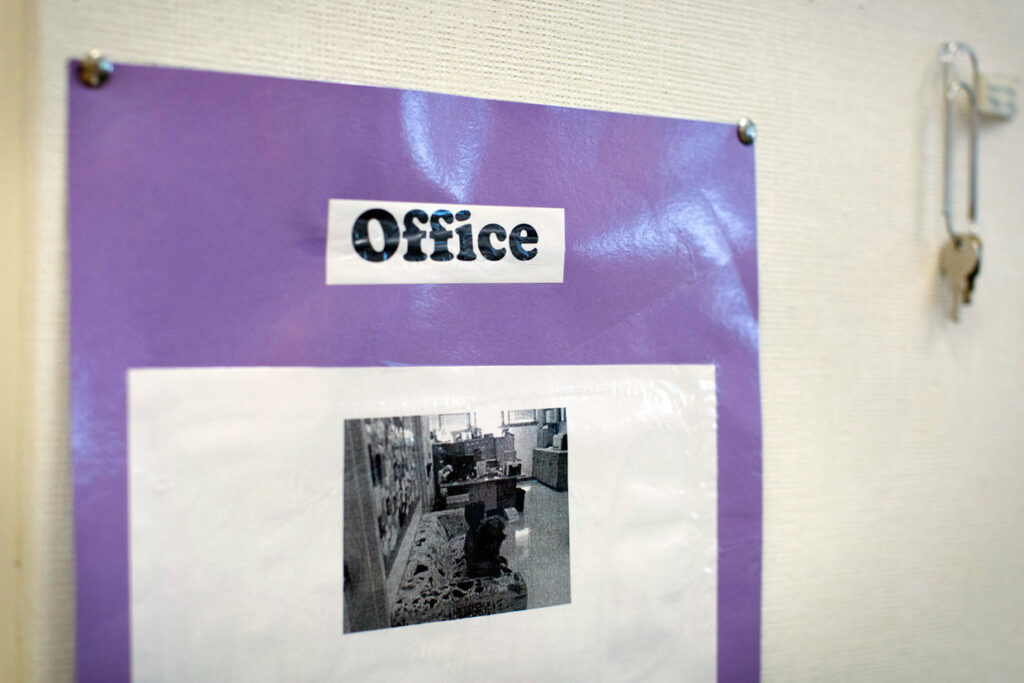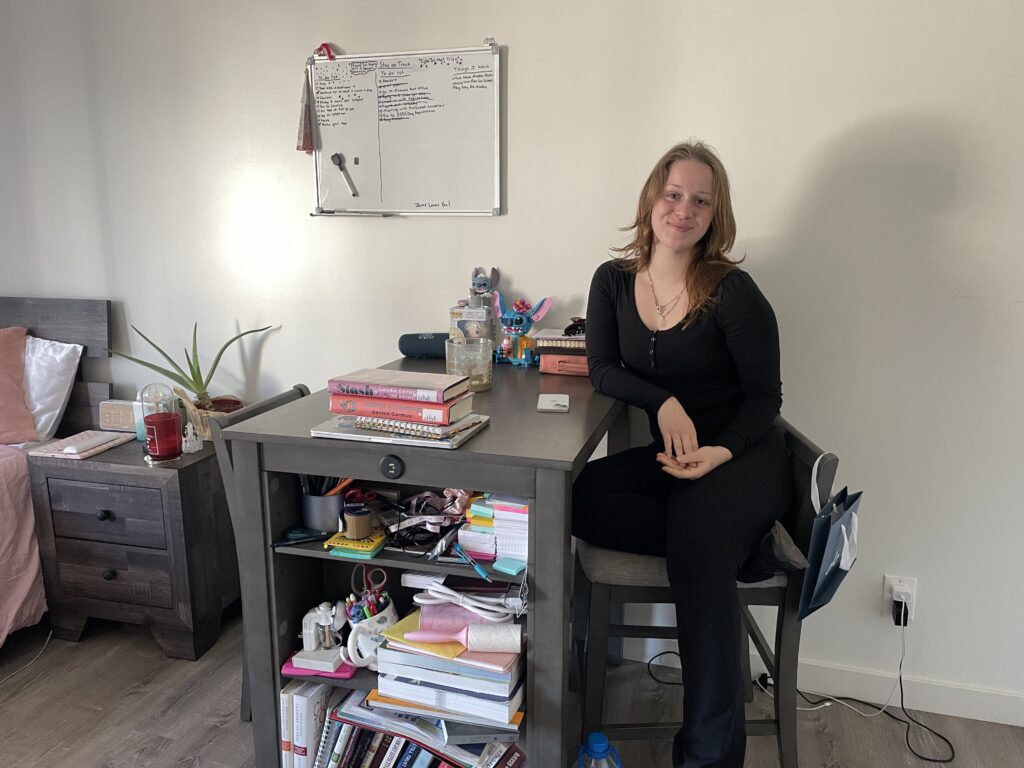When first grader Jordan Muñoz stopped going to school during the 2022-23 school year, his mother attributed it to depression, following the deaths of Muñoz’s great-grandfather and uncle. Some days, his mom couldn’t get him out of the house. Other days, she’d get him dressed and to the corner of Fresno’s Fremont Elementary, but he’d take off running. Most often, she failed to get him beyond the school parking lot.
“I tried to just take him. Leave him at school. But he would get right in front of my car so I wouldn’t leave,” said Muñoz’s mom, Deyanira Pacheco.
Aware of the difficulty, administration, counselors, psychologists and teachers at his Fresno Unified school developed a plan to support Muñoz, according to Cecilia Aguayo, the district’s child welfare and attendance specialist.
The district of over 70,000 students had made such plans before in an effort to reduce chronic absenteeism rates, which went from 50.3% during the 2021-22 school year to 35.4% in 2022-23. While this is still higher than pre-pandemic years, the decrease stands in sharp contrast to other districts, like Oakland Unified, where chronic absences rose from 47.5% to 61.4% during the same years.
Statewide, nearly a quarter of K-12 students remained chronically absent during the 2022-23 school year — a decline of about 5 percentage points from the previous school year, but a sign of the lingering effects of the pandemic that led to sharp drops in student attendance after schools reopened for in-person instruction. Students who are chronically absent from school are sometimes also the same children who do not have their basic needs met: Federal data shows that nearly half of all California homeless students, 44.5%, were chronically absent during the 2021-22 school year.
Nearly a third of the 930 districts statewide that reported data had a higher rate of chronic absenteeism in 2022-23 than the year before. A small number of districts, 33, had a chronic absenteeism rate over 50% in 2022-23, the most recent data available.
EdSource’s analysis of data from the California Department of Education offers insight: The statewide average rate of excused absences for the 2022-23 school year was 54.7%, with unexcused absences at 39.2%. Both numbers are similar to pre-pandemic levels.
While both excused and unexcused absences are counted toward chronic absenteeism rates, a school’s knowledge of the reasons behind the absences can better help them support and re-engage students.
Researchers and school staff have long tried to better understand how to re-engage chronically absent students, or students who missed 10% or more days in one school year.
State education code lists over a dozen reasons for excusing students from school; however, interviews with districts show that many excused absences are mental health and illness-related. Unexcused absences could indicate that students did not have proper documentation to mark them excused, or that they provided no reason for their absence or that the reason they provided does not qualify as an excusable absence.

Fresno Unified is in the Central San Joaquin Valley and is the state’s third-largest district. Across the 30 districts in Fresno County, all but four decreased their chronic absences between 2021-22 and 2022-23. Altogether, the average change was 11.62 percentage points, with Fresno Unified, the county’s largest district, above average with a gain of 14.9 percentage points.
The district credits their targeted communication with families as the foundation for their improvement, a method echoed by researchers as highly effective.
Child welfare and attendance specialist Aguayo made phone calls, visited Muñoz’s home and popped up at the school when Pacheco picked up her other child, a kindergartner, who soon followed his brother’s example and sometimes refused to attend school. The district referred them to counseling services.
Although Pacheco, the kids’ mother, said the visits and calls helped in a way, she didn’t pursue counseling, perhaps thinking it wouldn’t work, Aguayo said.
By the end of the 2022-23 school year, Muñoz had attended only 27 days out of 179 days enrolled — a 15% attendance rate. Of the days missed, only six were excused. The school district didn’t give up on him, however. They used every tool to get him back to school.
Oakland Unified’s rising chronic absences
Farther north, in Oakland, chronic absences increased from 47.5% in the 2021-22 school year to 61.4% the following school year. But the high rate was already clear prior to the pandemic, at 34.4% during 2018-19.

“There hasn’t been a ‘normal’ year in many years,” said Heather Palin, the district’s director of multitiered systems of support, about chronic absences, in October. “Just broadly speaking, this is way higher than pre-Covid.”
Oakland Unified, located in the San Francisco Bay Area, is a diverse district of 46,000 students that is currently facing a significant budget deficit. Most districts across Alameda County, of which Oakland Unified is the largest, either saw a decrease in chronic absenteeism or had virtually no change between the 2021-22 and 2022-23 school years. Oakland Unified ranked last and stands out with an increase of 13.9 percentage points.
The district has adopted a plan aimed at reducing its 61.4% district absentee rate by 25 percentage points with similar drops in each individual school, Palin said.
Each Oakland Unified school is expected to have an attendance team that meets regularly and includes an administrator, community school manager, attendance specialist and principal. Teams’ plans for increasing attendance include offering incentives like attendance certificates, celebrations and swag.
“It was an expectation that was set last year, and we have more capacity to support it, and we’re more kind of unified as a system in the messaging around the importance of that team,” Palin said.
The district offers a virtual school, Sojourner Truth Virtual Academy, but it’s not aimed at students who are chronically absent. Rather, it’s a different learning format offered to all students.
Cumulative enrollment data shows that this school remained a popular choice for students: it had 250 enrolled students pre-pandemic, then jumped to 1,533 students during 2021-22. The following year, 2022-23, nearly 1,000 remained enrolled.
Palin said that district authorities do not know why all students are chronically absent because schools were unable to reach some families. The students they reached mostly said they no longer wanted to attend school or requested a transfer to the virtual academy. Students also cited illness, family relocation, mental health and safety concerns.
How insight from families can help
While school administrators can excuse absences based on students’ individual circumstances — even if the reason is typically not covered by state law — they can only do so if they know the difficulties absent students are experiencing.
According to a recently published PACE report that examined California attendance data across the 2017 and 2022 school years, schools with higher rates of unexcused absences often have lower attendance rates overall. The same study by the nonprofit research group found that “socioeconomically disadvantaged students are much more likely to have their absences labeled unexcused.”
To address the number of illness-related absences, Fresno Unified clarified expectations, informing families about appropriate scenarios in which to send their kids to school. Consequently, excused absences increased from 41.3% in 2021-22 to 54.8% the following year, while unexcused absences decreased from 64% to 43.4%.
When the district knows what’s impacting student attendance, they can support, not penalize families, which many feared, said Tashiana Aquino, executive director of support programs, and Abigail Arii, director of the district’s student support services.
The very few excused absences that Muñoz had, along with conversations with his mother, helped the district set up a plan to increase his attendance.
Staff sent letters, called, visited the home, and educated Pacheco about attendance laws. “They asked me why he didn’t want to stay at school,” Pacheco said.
But even with a plan in place, Pacheco couldn’t get Muñoz, 7, to school.
By Sept. 23, 2022, she’d enrolled Muñoz in the district’s eLearn Academy, hoping he’d complete the work from home. Still, he wouldn’t. Six weeks later, he was re-enrolled at Fremont but was still not attending school.
Pacheco faced a school attendance review board (SARB) case in June 2023, a step “we really tried to avoid,” Aguayo said.
But the case was the “wake-up call” that pushed Pacheco to get the help she and Muñoz needed, said district staff.
“I think that’s where she realized, ‘I need to step up, too,’” said Tainia Yeppez, the SARB technician.
During the case, Fresno Unified again referred the family to counseling services. This time, in summer 2023, Pacheco started Muñoz in therapy.
New, more flexible solutions
Ongoing chronic absenteeism requires new thinking, advocates say, to ensure students do not fall back on foundational academic skills.
“Just because kids are not in the school building doesn’t mean we can’t still figure out creative and innovative ways to educate them. These chronic absenteeism rates are not going to just drop,” said Lakisha Young, CEO and founder of parent advocacy group Oakland REACH. “Everybody is in uncharted territory. So the question is: ‘Can we change the conversation?’”
At the height of the pandemic, Oakland REACH established a virtual learning hub for Oakland Unified’s K-2 students, offering tutoring that kept them engaged and attending school regularly. Early results showed that 60% of their students improved two or more reading levels on the Oakland Unified assessment, while 30% improved three or more levels. The organization now offers paid fellowships for Oakland caregivers to work as tutors producing high academic results.
Part of the challenge with common alternative learning formats to re-engage absent students while meeting their academic needs is that they are not always viable for students whose homes do not have the space to designate for schoolwork, said Young.
“A family who chooses to home-school has a different setup than a kid that’s chronically absent, but it doesn’t mean they can’t be given that option,” she said. It’s up to each district to find the solutions that would best serve their students, she added.
Southern California’s Glendale Unified is one of the few school districts with a slight decrease of 1% in their absenteeism rate plus low excused and unexcused absences: 20.6% and 22.3%, respectively.
Last school year, more students met with the district SARB, said Hagop Eulmessekian, Glendale Unified director of student services.
To address increasing mental health concerns, every Glendale Unified school has a wellness center where students can take a break during the school day. If a student is experiencing behavioral challenges, they are transferred to a community day school where they take each class in the same room throughout the day while teachers rotate for different subjects.
“There’s no wiggle room for the students who kind of disappear” throughout the day, said Eulmessekian. “They get the same education, they get fed, they get additional support, whether it’s counseling or therapy, and then when we see they’re able to go back on our comprehensive campuses, we transfer them back.”
Oakland REACH’s Young encourages educators to think outside the box.
“We have got to get creative about these babies,” said Young. “At some point you have got to do something different. You have got to just say: ‘This kid’s at home, how do I still get them educated?’”
Back in Fresno, Muñoz has done a complete 180. As of March, his attendance rate is 98%.
“Counseling really does help a lot,” Pacheco said.
She also needed to learn skills to address the boy’s behavior, Aguayo said. “I think she kind of got the power she needed. She finally got control.”
Of 128 days, he’s only missed two, one of which was excused. Even on days when he’s sad about losing his great-grandfather and uncle, he goes to school, Pacheco said. In fact, he made a commitment at the beginning of the school year to attend every day.
“Now, he wakes up at 6 in the morning, ready to go,” Pacheco said with a grin. Muñoz, now 8, likes going to school to play soccer with his friends.
He is behind academically — the impact of not attending school for most of his first-grade year, Pacheco said. The school provides additional academic support through remediation classes.
“All he needed to do was attend,” Yeppez said.
Because of his current high attendance rate, the court dismissed the SARB case in December, and Muñoz ended counseling in February.
For other families with students not regularly attending school, Pacheco said schools and districts must help them by talking to them and figuring out the problem, much like Fresno Unified did for her, and families must utilize the provided or recommended services, such as counseling.
“I think it was a little bit of everything that helped mom,” Yeppez said. “She was willing to get the help, accept the help and make that change. She was willing to make that change for her son’s success.”





























